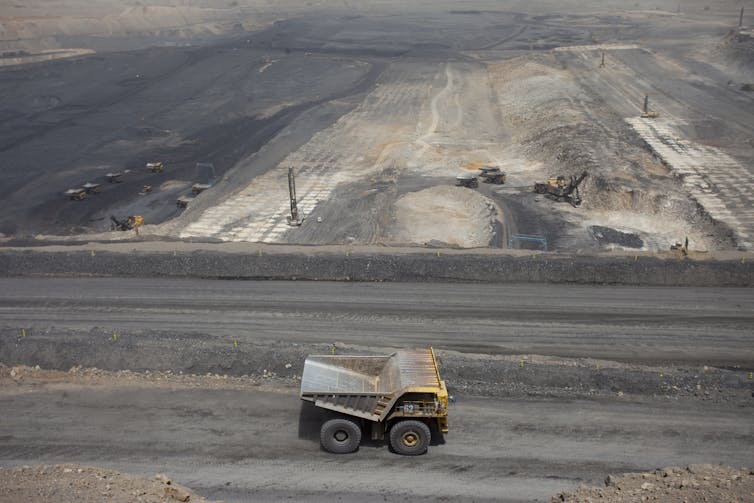Why renewed China-US cooperation bodes well for climate action

[ad_1]
The relationship between the US and China is the most important in the world, and it has been unstable and sometimes under extreme stress in recent years. But a recent meeting between presidents Joe Biden and Xi Jinping in California may bring new momentum for global climate action.
Climate change is a priority area of cooperation for the two countries, and a key document was released just ahead of the presidents’ meeting. The Sunnylands Statement on Enhancing Cooperation to Address the Climate Crisis reaffirms the two countries’ support for climate action and further institutionalises their cooperation.
The leaders of both countries understand that solving the climate crisis requires global collective action – especially from the world’s two largest polluters, who between them account for 44% of the world’s carbon emissions. Even during crisis time in their bilateral relations, the US and China still tried to maintain regular exchanges on climate change thanks to strong personal ties between their climate envoys.

Jane Barlow / Alamy
With Israel-Gaza and the long-lasting Ukraine-Russia war both creating problems for US foreign policy, Biden wants to rebuild the relationship with China. At the same time, China eagerly wants to reduce tensions in order to remove trade and investment restrictions imposed by the US. Climate change is a way for the two countries to rebuild trust.
Strengthening climate cooperation
The Sunnylands statement notes a working group will be set up to accelerate climate actions. This group was initially planned in 2021, but stalled after senior Democrat Nancy Pelosi visited Taiwan in summer 2022. Its establishment will provide additional guarantees to continue cooperation on climate change amid possible political turbulence in both countries, especially around next year’s presidential election in the US.
The statement also supports cooperation between cities, provinces and states in China and the US. Several Chinese provinces have already learned from California’s experiences in order to set up emissions trading programmes of their own, while California has signed agreements with various cities and provinces – including Guangdong province on industrial decarbonisation, and Jiangsu province on offshore wind. Agreements like these can ensure climate action continues when cooperation at the national level is interrupted, perhaps due to future political changes.
Don’t forget methane
Plans to reduce non-CO₂ greenhouse gas emissions also represent important progress. Most important of these is methane, which has strong greenhouse effects.
The US has been pushing China to address methane since 2021 – and just a week before the Biden-Xi meeting, China announced its first methane action plan. The Sunnylands statement sent a signal to the rest of the world that the planet’s two largest emitters intend to make more efforts to reduce these emissions.

Yaorusheng
Implications for COP28
The statement also reaffirms the two superpowers’ support for the UN’s official climate processes, including the Paris agreement – the success of which depends on the ambition of each country’s pledge to reduce emissions. Crucially, the two biggest emitters have reaffirmed their determination to be more ambitious when the pledges are next updated in 2025.
The current UN climate conference, COP28 in Dubai, will also conclude the first global “stocktake”, which is likely to find there has not been enough progress towards the goal of limiting warming at 1.5°C. That’s why many countries and other stakeholders – even including big businesses – have called for a global agreement to phase out fossil fuels to be made at the conference.
The success of this initiative is likely to depend on the political will of China, which – despite already burning the most coal in the world – has continuously expanded its coal-fired power plants.
While the Sunnylands statement has no explicit mention of ending fossil fuels, it says both countries intend to “sufficiently accelerate renewable energy deployment in their respective economies […] so as to accelerate the substitution for coal, oil and gas generation”. As China is also a global leader in clean technologies with the largest solar and wind capacity in the world, further cooperation between the two countries on renewables is good news.

Jenson / Shutterstock
The two countries also agree that the global stocktake should “send signals with respect to the energy transition”. This implies they may be willing to discuss the phaseout of fossil fuels at COP28, and potentially support an agreement.
Finally, being respectively the largest developing and developed countries in the world, China and the US have also shown commitment to building consensus in contentious negotiations on climate finance – money paid to poorer countries to help them adapt to climate change or cut their own emissions.
On the first day of the conference the establishment of a so-called loss and damage fund was announced, to help more vulnerable countries cope with the consequences of climate change. This is a good start. This is a good start. However, existing pledges remain insufficient, and funds will still need to be equitably distributed to developing countries impacted by climate change. Cooperation between the two superpowers will be instrumental in building effective and just institutions to deliver that money.
As China and the US have restarted their climate cooperation with strong commitments, the world can raise their expectations for COP28. Global policymakers must seize their last remaining opportunities – and this is a promising start.

Don’t have time to read about climate change as much as you’d like?
Get a weekly roundup in your inbox instead. Every Wednesday, The Conversation’s environment editor writes Imagine, a short email that goes a little deeper into just one climate issue. Join the 20,000+ readers who’ve subscribed so far.
[ad_2]